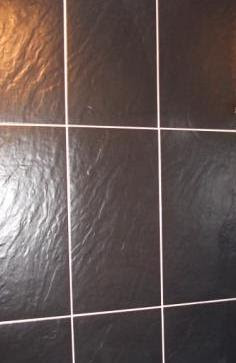DIY tiling is often thought of as quite a risky task, unless you are experienced at doing it. If it's your first time, the prospect of tiling your own home can be a somewhat daunting one. People choose tiles as a surface in their homes for a number of reasons, primarily that they provide a waterproof surface whilst being visually appealing. There are plenty of resources online to give you hints and tips with tiling, but it's really about getting stuck in and giving it a go. However, there are a few things you should know before you try to tile any surface.
Before you start anything, you need to make sure that you have the right tiles for the job. Consider what materials are best suited for your needs and what look will best suit your home. Once you've chosen your tiles, you need to come up with a detailed plan of how the tiles will be arranged. Depending on how you want your tiles to appear, the arrangement should normally be symmetrical and straight.
Planning ahead should help avoid any mishaps during the process. This will also enable you to calculate whether you have enough tiles for the job.
The surface you are going to tile must be prepared beforehand. Whether the surface is flat or upright, it needs to be even and straight. If you fail to achieve a flat surface, when it comes to the actual tiling it will be extremely difficult and the end result will be less than impressive. If you don't have the ability to re-plaster or re-skim the surface, you could always consider putting up new plasterboard.
The next step is to actually secure the tiles to your chosen surface. For this you will need a special adhesive and once this is totally dry you should use a grout to fill in the gaps between the tiles. Wipe away any excess grout with a damp cloth.
Undoubtedly, you will need to cut some of your tiles down to size in order for them to fit perfectly. There are various ways in which you could tackle this, the easiest being using a flat bed cutter. With this machine, you lay the tile on the bed and run the scriber over, making a perfectly straight score where required. Now you place the tile in the cutting jaw, pull the lever and the tile will cut with ease.
Before you start anything, you need to make sure that you have the right tiles for the job. Consider what materials are best suited for your needs and what look will best suit your home. Once you've chosen your tiles, you need to come up with a detailed plan of how the tiles will be arranged. Depending on how you want your tiles to appear, the arrangement should normally be symmetrical and straight.
Planning ahead should help avoid any mishaps during the process. This will also enable you to calculate whether you have enough tiles for the job.
The surface you are going to tile must be prepared beforehand. Whether the surface is flat or upright, it needs to be even and straight. If you fail to achieve a flat surface, when it comes to the actual tiling it will be extremely difficult and the end result will be less than impressive. If you don't have the ability to re-plaster or re-skim the surface, you could always consider putting up new plasterboard.
The next step is to actually secure the tiles to your chosen surface. For this you will need a special adhesive and once this is totally dry you should use a grout to fill in the gaps between the tiles. Wipe away any excess grout with a damp cloth.
Undoubtedly, you will need to cut some of your tiles down to size in order for them to fit perfectly. There are various ways in which you could tackle this, the easiest being using a flat bed cutter. With this machine, you lay the tile on the bed and run the scriber over, making a perfectly straight score where required. Now you place the tile in the cutting jaw, pull the lever and the tile will cut with ease.



No comments:
Post a Comment